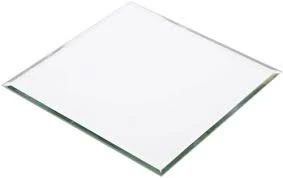

The Price of 6mm Float Glass An Overview
Float glass, a type of flat glass that is produced using the float glass process, is widely used in various applications ranging from construction to automotive. Among the different thicknesses available, 6mm float glass is particularly popular due to its versatility and strength. However, as with any industrial commodity, the price of 6mm float glass can fluctuate due to various factors, which makes it essential for both consumers and industry professionals to understand the dynamics at play.
Factors Influencing the Price of 6mm Float Glass
1. Raw Material Costs The primary ingredients for producing float glass include silica sand, soda ash, and limestone. The cost of these raw materials significantly impacts the final price of the glass. For instance, when there are disruptions in the supply chain, such as natural disasters or geopolitical tensions, the prices can increase.
2. Production Processes The float glass manufacturing process involves melting raw materials at high temperatures and then floating the molten glass on top of molten tin to create a smooth, uniform surface. The energy costs associated with this process—particularly natural gas and electricity—also play a crucial role in determining the price of float glass. Price fluctuations in energy markets can therefore directly influence glass prices.
3. Market Demand The demand for 6mm float glass is heavily influenced by the construction industry, which uses it for windows, doors, and facades. In regions experiencing economic growth, demand for float glass tends to rise, pushing prices up. Conversely, during economic downturns, demand may decrease, leading to lower prices. Seasonal trends can also affect demand, with certain times of the year, such as spring and summer, seeing peaks in construction and renovation activities.
4. Technological Advancements Innovations in glass production techniques can lead to cost reductions and efficiencies. For example, advances in energy efficiency in manufacturing can reduce operating costs and thus lower prices. Additionally, developments in the recycling of glass and other raw materials can also contribute to a more stable pricing structure.

Regional Variations in Pricing
It's important to note that the price of 6mm float glass can vary significantly from one region to another. In regions with abundant raw materials and advanced manufacturing facilities, prices may be lower compared to areas that rely heavily on imports. Furthermore, tariffs and trade policies can also affect prices, leading to discrepancies between domestic and imported glass products.
Current Market Trends
As of late 2023, the float glass market has been witnessing fluctuations that are characteristic of the global economic landscape. Supply chain disruptions, influenced by ongoing geopolitical situations and natural events, have led to increased prices in many regions. However, as economies stabilize and supply chains are restored, there is a potential for prices to normalize.
Additionally, the push for green building practices and energy-efficient designs is influencing the market. 6mm float glass is being promoted for its transparency and insulation properties, making it a key component in energy-efficient buildings. This trend can lead to increased demand, which may result in higher prices over time.
Conclusion
In conclusion, the price of 6mm float glass is determined by a complex interplay of factors, including raw material costs, production processes, market demand, and regional influences. As the construction and automotive industries continue to evolve, understanding these dynamics is crucial for consumers and professionals alike. Keeping an eye on market trends and being aware of external influences can help stakeholders make informed decisions when it comes to purchasing 6mm float glass. With ongoing developments in technology and design preferences, the future of float glass pricing will undoubtedly continue to evolve.